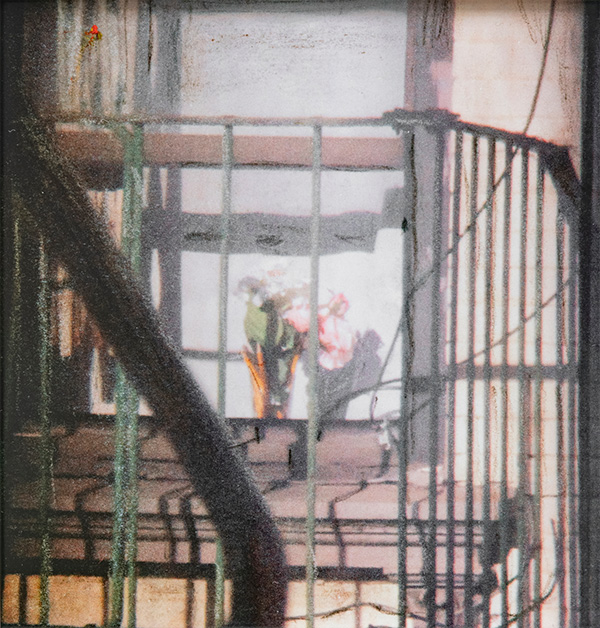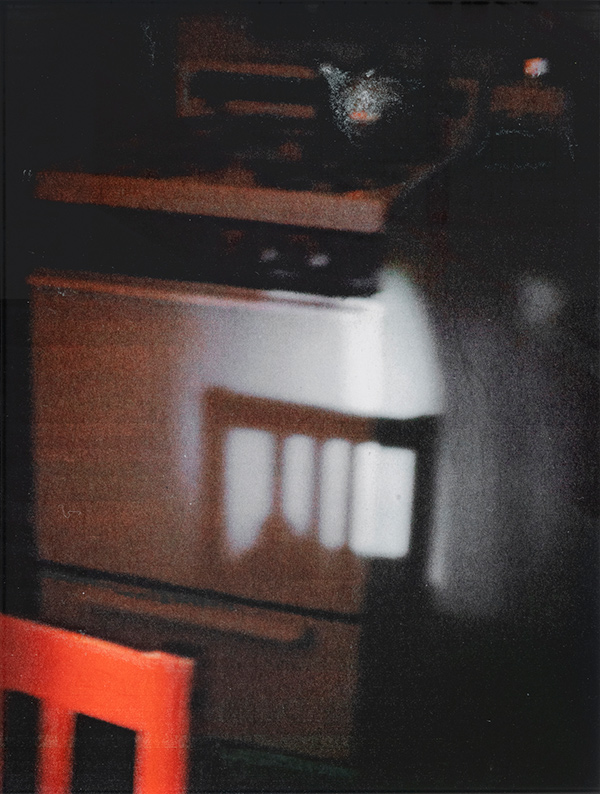current inspirations
The Invisible In-Between: An Englishman's Search for the Irish Border by Tristan Poyser - I recently saw this work for myself in Belfast Exposed and haven't been able to stop thinking about it since.
"Poyser has spent the last two years travelling and photographing the full length of the 510 km Irish border. Then tearing his photographs in half. The materiality of the border is shown through a physical tear, making the invisible, visible. The act of tearing creates uneasiness, evoking notions of the political and economic tensions surrounding the border's position within the Brexit negotiations, symbolising the divorce of the UK from the 27 remaining states. The Invisible In-between shows the viewer the reality of the border & encourages them to explore the intangible nature & uneasiness surrounding it."

Don't Ask by Harry Mckenzie - it's no secret I am a big fan of flowers, scanner art, and work about memory.


Barbara Ess - "Ess is interested in the distance a camera creates and what viewing life from afar accomplishes, or as she describes, the chasm between self and other, the “in-here” and “out-there.” She has tackled this subject in past work, most notably in the book I Am Not This Body (1991), published by Aperture."

Also mentioned- The Woman Behind the First-Ever Photograph of DNA - "Peer deep into this photograph’s heart, eye, vanishing point. Despite the beauty, no hammered stare, of any length, unlocks meaning or maker. The image (inviolate) defies casual analysis. Perhaps, you wonder, identification of topic or photographer is irrelevant. No clues visible (except perhaps to a biologist). Ah, now you read the label. The shoulders sigh (aesthetic surmises fade), the eye winks (no joke), and a scientist strides onto the stage and grips the podium (serious stuff).
This is the iconic X-ray diffraction photograph of DNA taken by physical chemist Rosalind Elsie Franklin and PhD student Raymond G. Gosling. The genetic material glimpsed in Photo 51 connects all living things and the image thus metaphorically captures human past, present, and future. It also marks an important milestone in science. In the last half-century, research that drew from Franklin’s photograph has brought advances in biology, medicine, paleontology, and many other parts of life."

Falling by Chloe Ostmo (text from here) - "Chloe Ostmo‘s photography installation “Falling” is art as an active verb. Ostmo re-inserts the three-dimension quality of falling into what could have been merely a flat series of photos of a woman tumbling down a flight of stairs. The effect is similar to that of glitch art, except wrought in realistic rendering.
“My work is broadly concerned with the negotiation between a three-dimensional original event or object and its two-dimensional copy,” Ostmo says in an artist’s statement. “I am interested in the transformations that occur and their impact upon our perception and understanding of space.”
Ostmo’s installation doesn’t seem to only evoke a different perspective regarding the three-dimensional and two-dimensional; it seems to call up the fact that our attention can only be held by one part of a whole at a time. By breaking up the act of falling into various pieces and smaller photographs, Ostmo’s installation almost mimics the way we parse reality, reducing it into manageable pixels that eventually form the entirety of an event."


Twins in Australia by Kimberly Carpenter - "Memographica Object - Hand bound photographic book describing two twins separate experiences."


Comments
Post a Comment